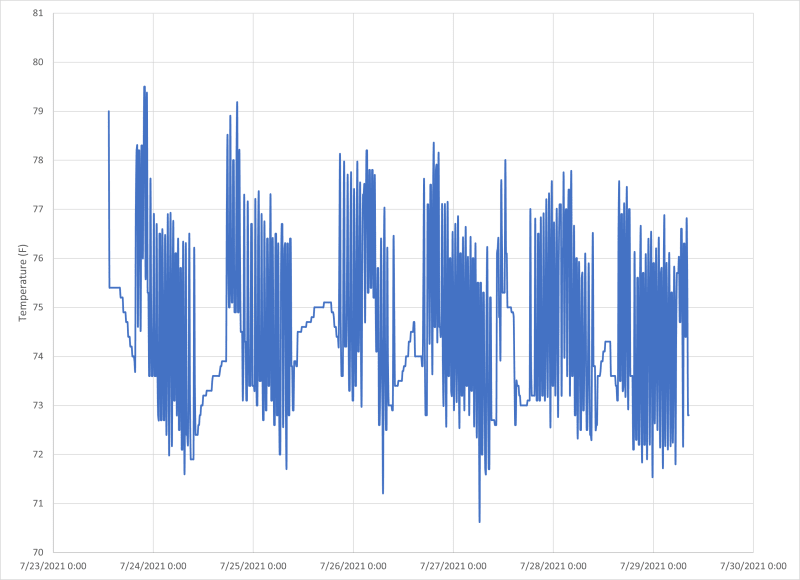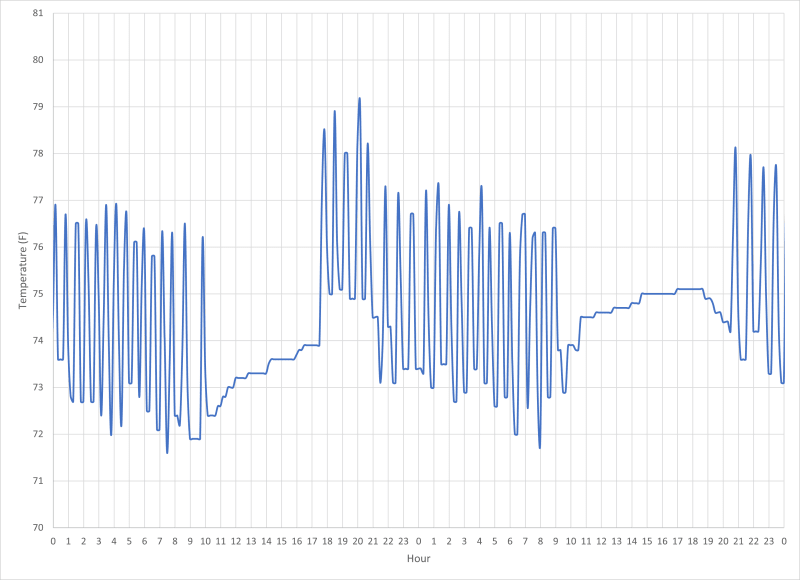A. Ocellaris
Marine/Ocean
- Aug 2, 2021
- 5
I am using a 4-channel thermologger (AZ Instruments model #88598) that uses K-type thermocouples. The data is fine for about half of the day, but between about 8pm and 9am (overnight), all 4 channels rise and fall in a sine pattern with a period of about 40 minutes and an amplitude of ~5 degrees F. Three of the thermocouples are in salt water (marine aquariums), and one is in the air measuring room temperature. The data logger is running on 4 AA batteries and is not near any electrical wires.
Does anyone have any idea what might be causing this noise?


Does anyone have any idea what might be causing this noise?




![[ponder] [ponder] [ponder]](/data/assets/smilies/ponder.gif)